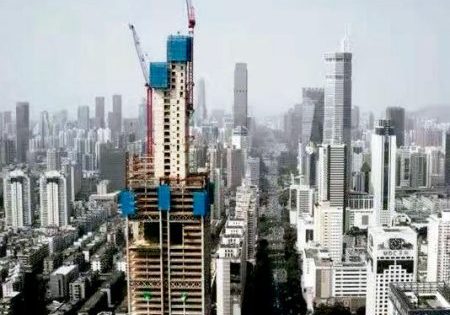Charlie Slater of ATIS details concerns the inspection giant sees in escalators and moving walks across America and how to mitigate them.
by Lee Freeland
Your author (LF) recently spoke with Charlie Slater (CS), chief operating officer for St. Louis-based ATIS Elevator Inspections, LLC, which has more than 140 QEIs servicing all 50 U.S. states. Slater oversees all the company’s QEIs and serves on multiple ASME A17 code development committees and provides education for QEIs and mechanics nationally through NAESA International.
LF: How many escalators and moving walks does ATIS inspect (per month, year, etc.) and in which areas?
CS: We perform more than 3,500 escalator and moving walk inspections each year across the U.S. Many of the units are in retail locations, airports, casinos, convention centers and sports complexes — anywhere there are high traffic flows. They range from units indoors without exposure to weather to units operating outdoors, where water, the sun and exposure to extreme temperature variations over the course of a year can wear on the units.
LF: What are some common code violations you notice when inspecting them?
CS: We find that comb impact test failures, step-skirt performance index test failures, broken comb teeth, worn step treads and cracked handrails are common violations. Comb impact switches are required to trip at or below certain pressures, per ASME A17.1, to ensure that if something is drawn into or under the combplate, the unit will shut down and minimize damage to the equipment and/or minimize injury. We find that comb impact pressures are often not within code requirements. The causes for this are, generally, the switches being out of adjustment or the combplate being difficult to move due to dirt and grime buildup underneath it.
The step-skirt performance index test is performed to measure the potential for an object to be drawn between a moving step and the skirt panel of an escalator by measuring the loaded gap between the step and skirt, as well as the coefficient of friction of the skirt panel surface. We find that the skirt panels become scarred due to riders dragging their feet/objects or the steps dragging against them. This causes a higher coefficient of friction, which can open a large gap via pushing. Both of these conditions increase the potential for an object to be drawn between a moving step and the skirt panel.
Broken comb teeth and broken/worn step treads usually occur because something hard (like a screw or rock) falls onto the step tread and grinds the comb teeth and step tread while the unit runs. These conditions make it easier for something to be drawn under the combplate.
Cracked handrails generally occur due to normal wear, but, if left unaddressed, they can present a pinch hazard to riders.
LF: Are certain code violations on this type of vertical-transportation equipment more prolific in certain regions/states?
CS: Violations tend to be related to the levels of usage and maintenance. Regionally, the violations tend to be similar. That being said, certain environmental conditions can have an effect on the lifecycle of the equipment’s parts, such as handrails being exposed to direct sunlight, which can cause them to deteriorate and crack sooner than expected. Similarly, exposure to water can cause deterioration of equipment due to rust.
LF: Do you have any recommendations for escalator and moving walks code committees to make the equipment safer?
CS: From our experience, many accidents on escalators or moving walks are due to misuse of the units, where a rider doesn’t follow the directions depicted on the safety signage that advise how to ride. However, some accidents are the result of poor maintenance, either where maintenance is not performed per manufacturer-recommended procedures or not performed frequently enough (considering the rate of usage). Both causes of accidents are behavioral, making them difficult to address with code. But, the code committees are constantly working to improve the safety of escalators and moving walks by adding requirements not only related to the equipment to reduce the chance for an injury to occur, but also related to maintenance to ensure the units are maintained to code.
LF: What advice would you like to give building owners regarding escalators and moving walks?
CS: Ensure your units are receiving the maintenance they require to be safe and code-compliant by using an independent vertical-transportation consultant to perform a maintenance audit at least once a year. Also consider having a consultant develop a tailored maintenance control program and/or maintenance contract for your units. Remember to require that the units are cleaned thoroughly at least once a year. This includes removing steps to clean the truss, tracks and pans. During this cleaning, components should be adjusted to ensure code compliance. Finally, ensure you have staff members trained to perform the code-required escalator startup procedures and have them perform and document those startup checks at least once a day. See ASME A17.1/CSA B44 Section 8.6.11.6, which prescribes that the escalator owner or authorized person(s) performs certain startup inspections and tests at least daily and sign off on the findings in a permanent record. It also includes a 13-step pre-start checklist (“Escalator Safety for Owners: New Responsibilities,” ELEVATOR WORLD, May 2016).
LF: What advice would you like to give escalator and moving walk maintenance companies and technicians regarding the equipment?
CS: Provide training to mechanics on proper maintenance procedures and ensure they understand why the procedures are important so they take care to perform them correctly. Also train them on proper periodic testing procedures for ensuring escalator and moving walk code compliance. Finally, ensure they know the reasons for testing per the proper procedures. We have found, for instance, that many mechanics incorrectly perform step-skirt performance index testing because they have not been sufficiently trained on the procedures or they cut corners on steps in the procedures because they don’t understand why the steps are critical.
Budget and price maintenance agreements are to include a thorough cleaning of the units at least once a year. This includes removing steps to clean the truss, tracks and pans. During this cleaning, components should be adjusted to ensure code compliance.
LF: Is there anything else you’d like to discuss/mention?
CS: There should be a larger effort by us within the industry to better educate the riding public on how to properly use escalators and moving walks and the dangers of misuse. These are pieces of machinery without feelings for whether they hurt you. If you don’t hold the handrails, you could fall. If you drag your feet on the sides or over the combplate, your shoes and, possibly, your foot could be dragged into the unit. These units are not toys and are not meant to be played on. If we can work together to send that message to the riding public, perhaps accidents would not occur as often, and severe injuries could be prevented.
Get more of Elevator World. Sign up for our free e-newsletter.









